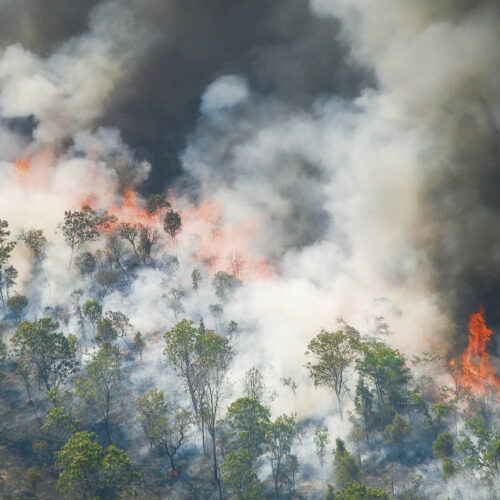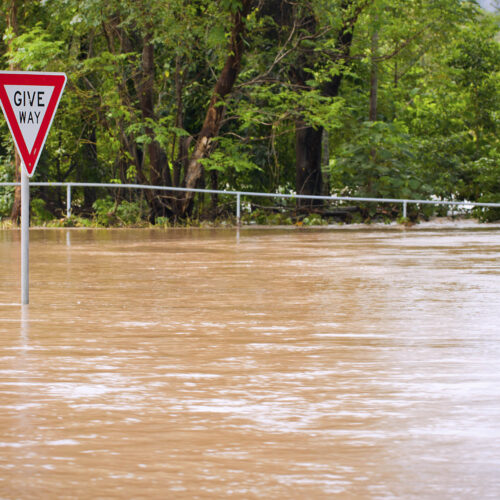Climate in crisis
2015-11-09T00:57:26+11:00
Dr. REESE HALTER looks at current climate change conditions and measures to avert crisis.
We have known since the early 1800s that carbon dioxide in the atmosphere traps heat, but it took until the 1950s for the effects of the Industrial Revolution to be really appreciated by scientists using new recording techniques. By 1965 alarm bells were well and truly ringing with then US President Lyndon B. Johnson acknowledging to Congress that the atmosphere was being altered by humans on a global scale.
Then, in the early 1970s, distinguished climatologist Dr James Hansen and other scientists began drawing concerted attention to the follies of continuing to release masses of heat-trapping greenhouse gases into the atmosphere. It is hard then to understand how we now stand in such a perilous situation with our future in jeopardy.
With world leaders due to meet in Paris in November to finalise a plan to tackle rising temperatures, the question must be asked: Where does the world and humanity stand? There is good and bad news to report, including a big shift in the acceptance of climate change science, but we are starting well behind the advantage line. For a start, the population of the planet has more than doubled and we are burning in excess of 96 million tonnes of fossil fuels each day. Our insatiable demand for energy from carbon-based fuels has risen exponentially. In the past 25 years alone, fossil fuel consumption has quadrupled.
Australia and the world
Of all the inhabited continents, Australia is already feeling the wrath of an atmosphere that now exceeds 404ppm of carbon dioxide and continues to rise. According to one NASA scientist, Earth hadn’t crossed that 400ppm threshold since the Pliocene epoch 2.5 to 5.3 million years ago. Extreme weather has begun ravaging the eastern half of Australia. Drought after drought with prolonged heatwaves, record-breaking temperatures, bushfires that moved faster and burned hotter than ever recorded in modern times were punctuated by epic flooding in Queensland in 2011, costing taxpayers an estimated $17 billion. Globally, the first six months of 2015 and the 12 months to June were the hottest in 136 years of record keeping, says the US National Oceanic and Atmospheric Administration. On March 24, Esparanza Base recorded its highest temperature since the inception of record keeping on Antarctica at 17.5°C. March also delivered extreme temperatures to the entire Australian ocean region. It was the hottest January to March ever recorded along the Great Barrier Reef – an extraordinary marine ecosystem that is under severe stress.
Warning on warming
My colleagues from Scripps Institution of Oceanography at the University of California, San Diego, predict that a warming planet is already stoking the intensity of tropical cyclones in the north-west Pacific and their ferocity will continue to increase throughout this century. Their startling research examined 850 typhoons and found the intensity of the damaging storms has increased by 10 per cent since the 1970s. They say the ‘superstorms’ of the future will be at least 14 per cent stronger. Super Typhoon Haiyan in 2013 left 6,200 people dead and 1,785 missing in the Philippines alone. Haiyan had the fastest-ever recorded sustained wind speeds at 315kph. Super typhoons also wreak havoc and destruction of corals and all marine life. Nature and our life-support systems are unwinding at an apocalyptic rate, showing the foolhardiness of decades of policies protecting economic evelopment ahead of the environment.
Confusion and lethargy
From 2003 to 2010 it is estimated that conservative groups in America alone spent nearly $1 billion per annum on publicity and disinformation denying the science and opposing any action on a climate plan*. Up until recent years, people worldwide have been confused because of attempts to discredit the overwhelming scientific evidence for global warming and because most governments have failed to implement strong policies to curtail greenhouse gas emissions. Meanwhile, fossil fuel companies have profited heavily. In June, a report released by the International Monetary Fund disclosed that globally coal, oil, gas and fracking benefits by US$5.6 trillion annually in subsidies including unclaimed environmental and health costs. Despite encouraging recent pledges by the US and China to cut emissions, the world is still reluctant to decouple from fossil fuels any time soon. At the June 2015 G-7 meeting in Germany, governments announced that they intended to phase out fossil fuels – within 85 years.
A matter of degrees
Across Australia and around the globe the bees, trees and seas are all irrefutably showing that as we near global temperatures of 1°C above pre-Industrial Revolution levels (1840), ecosystems are collapsing. The International Union of Forest Research Organisations (iufro.org) released a report warning that if 2.5°C is surpassed then forests globally could lose their entire carbon dioxide storage capacity. That is, instead of removing carbon dioxide from the atmosphere they would release it, making our planet uninhabitable for life as we know it.
Already eucalypts are showing signs of deadly reactions to elevated temperatures in combination with prolonged heatwaves. Extreme heat in 2013 has been implicated in causing ginger syndrome in Tasmania, which causes stressed trees to exude gum from their bark. Subsequently, plantation and wild blue and white gums died across the north of that state. In south-west Western Australia, the jarrah forests along with the ancient marris are dying. Once again, heat and subsequent attack by pathogens are implicated.
Change for the good
We have reached the most interesting and challenging moment since our earliest progenitors first walked the earth some seven million years ago. A ‘business as usual’ model that continues to burn more fossil fuels will have disastrous consequences. But there is hope. For the first time in recorded history, the Pope has weighed heavily into what pundits are now rightfully dubbing the “climate crisis”. Pope Francis’s encyclical – entitled ‘Laudato Si’ or ‘Praised Be’ – lays out the moral reasons for acting immediately on the human-caused climate crisis. The science behind his 200-page document is spot on. The Pope is calling for a massive reduction in greenhouse gases to save both our species and Earth’s life-sustaining systems. It is easily the most important and definitive document ever released by a world leader.
The second most heartening event took place about a fortnight after ‘Laudato Si’ was released; a group of 900 Dutch citizens, represented by the Urgenda Foundation, took their government to court over the legal obligation to protect its people against the looming dangers of rising sea levels. Holland is mostly below sea level and thereby vulnerable to rising sea levels caused by the climate crisis. The citizens successfully argued that unless rapid action was taken in the next 40 years, their country would experience extreme weather, shrinking ice caps and shortages of both food and fresh water. This ruling started a wave of climate litigation globally. The courts ordered the Dutch government to reduce carbon dioxide emissions by 25 per cent by 2020.
It’s a very necessary beginning because based on initial pledges by four dozen countries for the United Nations Climate Change Conference in Paris, with modest greenhouse cuts, Earth will reach a 2°C warming threshold by 2038. Climatologists, oceanography and marine scientists, and forest biologists believe we must prevent crossing the 2°C threshold because the climate disruption signs at just below 1°C are frightening enough. To achieve this we must cut emissions globally by 25 per cent below the 1990 levels by 2020 and continue to pulse down heavily to attain 50 per cent by 2038, with complete phase out by 2060. There’s every reason to believe that we, as global citizens, can achieve this tremendous transformation away from a carbon-based economy because the alternative is an unimaginable nightmare.
Climate change tips for home gardeners
by Simon Webster
1. Research how climate change is likely to affect your region.
2. Choose climate change-suitable species when planting long-term crops such as fruit trees.
3. Capture and store rainwater, and recycle greywater to cope with drought.
4. Plant trees on mounds and install drainage to cope with floods.
5. Add organic matter to soil in the form of compost, green manures and mulch. This will
not only make your soil more able to cope with floods and drought, but store carbon in
the soil too.
6. Moderate soil temperatures (and add organic matter) with mulch.
7. In summer, grow under shade structures.
8. Be vigilant: watch out for early signs of pests and diseases and be prepared to take action. If you are seeing an increase in fungal disease, improve airflow by pruning and giving plants more space.
9. Take steps to lower your carbon footprint and join a campaign to stop climate change.






